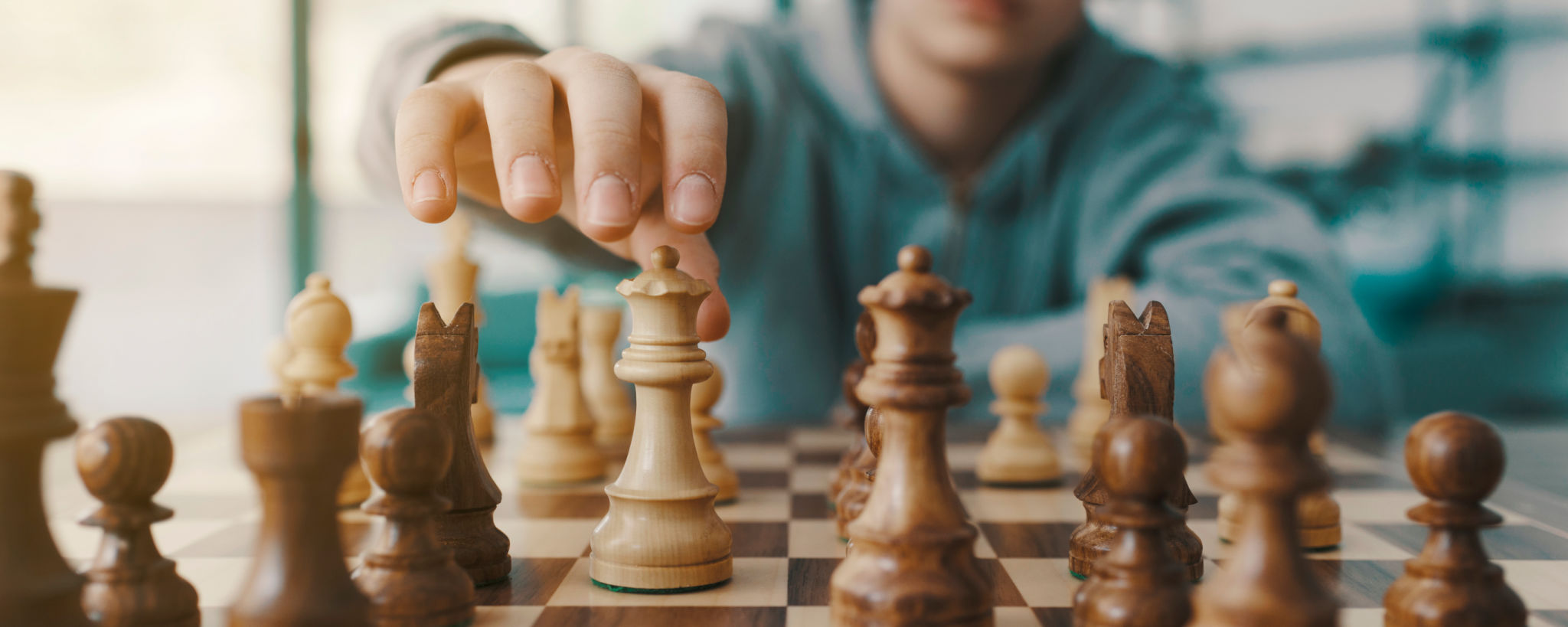Mastering Chess Basics: A Comprehensive Guide for Beginners
Understanding the Chess Board
Before diving into the strategies and tactics of chess, it's essential to familiarize yourself with the chess board. The board consists of 64 squares, arranged in an 8x8 grid. Alternating in color, these squares help players navigate their pieces. Typically, the board should be oriented so that each player has a white square on their right-hand corner.
The rows are known as ranks, numbered 1 to 8, while the columns are called files, labeled from 'a' to 'h'. Understanding the coordinates of each square is crucial for recording moves and strategies. Positioning the board correctly is the first step towards mastering chess.

Introducing the Chess Pieces
Each player begins with 16 pieces: 1 king, 1 queen, 2 rooks, 2 knights, 2 bishops, and 8 pawns. Each piece has its own unique movement capabilities. The king can move one square in any direction, while the queen has the freedom to move any number of squares along a rank, file, or diagonal.
The rook moves any number of squares along a rank or file, and the bishop can move any number of squares diagonally. Knights have a unique movement in an L-shape: two squares in one direction and then one square perpendicular. Lastly, pawns move forward one square but capture diagonally.

Basic Chess Moves and Strategies
Now that you know how each piece moves, it's time to explore some basic strategies. The opening phase is critical in chess as it sets the stage for the rest of the game. Begin by developing your pieces towards the center of the board, which gives you greater control.
One popular opening strategy is to control the center with your pawns and knights early on. Avoid moving the same piece multiple times in the opening phase unless necessary. Castle early to safeguard your king and connect your rooks for better defense and offense.
Understanding Check and Checkmate
A vital part of chess is understanding check and checkmate. When a player's king is under direct threat of capture, it's called a "check." The player must respond immediately by moving out of danger, blocking the threat, or capturing the threatening piece.
Checkmate occurs when a king is in check and cannot escape capture, signaling the end of the game. Practicing these scenarios can significantly enhance your defensive skills and improve your overall game strategy.

The Importance of Planning Ahead
Planning ahead is a vital skill in chess. This involves not just thinking about your next move but anticipating your opponent's potential responses. By visualizing different scenarios and outcomes, you can develop a robust strategy that keeps you several steps ahead.
Consider both offensive and defensive strategies during play. While attacking your opponent's pieces is tempting, maintaining a strong defense ensures your pieces are protected. Balancing these two aspects is key to becoming a proficient player.
Practicing with Puzzles and Online Play
To refine your skills, practice with chess puzzles that challenge your strategic thinking. These puzzles simulate real-game scenarios and help you develop quick problem-solving abilities. Additionally, playing online against opponents from around the world can greatly improve your adaptability and understanding of diverse playing styles.
Many online platforms offer tutorials and resources to help beginners transition from basic knowledge to advanced play. Utilize these tools to gradually build confidence and competence in your chess journey.

Learning from Chess Masters
Studying games played by chess masters can provide invaluable insights into advanced strategies and techniques. By analyzing their moves, you can learn how they control the board, develop their pieces, and execute complex tactics.
Books, videos, and online courses are excellent resources for learning from grandmasters. Observing their decision-making process helps you understand what separates an amateur from a professional player.
Conclusion: Embrace Continuous Learning
Mastering chess basics is just the beginning of a lifelong journey filled with learning and discovery. As you continue to play and study, you'll find new ways to challenge yourself and grow as a player. Stay curious, practice regularly, and don't hesitate to experiment with different strategies.
Remember that every game offers a new lesson. Whether you win or lose, each match contributes to your overall understanding of chess. Embrace continuous learning as you strive to become a skilled and knowledgeable chess player.
